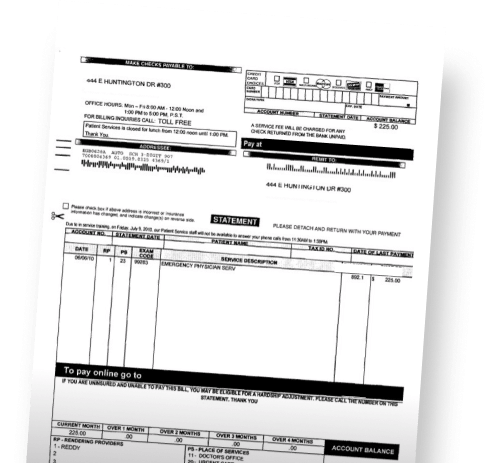Health Insurance Compared with No Worries
For the average Australian, health insurance is a necessary factor of life. With the trials and tribulations that everyday living can throw ones’ way, having financial aid when you need it most is absolutely essential. Not only does health cover allow you to reap the various monetary benefits of the plan, but it also takes a huge mental load off anyone who has been involved in an accident, or just requires medical attention.
The benefits of health insurance are vast – but how does it operate in Australia, and how do the various private organizations stack up against each other? Fortunately, No Worries is here to simply and efficiently break down everything you need to know about health insurance comparison in Australia. So read on to unveil the mystery behind waiting periods, hospital and extras cover, and the plethora of other intricacies in the world of health insurance policies.

What is health insurance?
Simply put, health insurance aims to reduce the costs associated with the expenses incurred in a hospital. It doesn’t just extend to hospital visits though – extras cover looks to reduce the cost of surrounding medical fees, such as physiotherapy, dental, optical, and other services.
The public healthcare system in Australia operates through Medicare, which is a free (or low-cost) system that covers a fundamental array of services. While many people deem Medicare to be enough in terms of their health insurance needs, private health insurance provides a broader and more comprehensive array of benefits.
What is the Medicare Levy surcharge?
While private health insurance is more expensive than the Medicare public health system, there is a cost associated for people who opt out of purchasing private health insurance. This is known as the Medicare Levy Surcharge, and it is applicable to people who earn over a certain salary. The breakdown is as follows:
Singles Income
- $90,000 or less = 0.0% surcharge
- $90,001 to $105,000 = 1.0% surcharge
- $105,001 to $140,000 = 1.25% surcharge
- $140,001 or more = 1.5% surcharge
Families Income
- $180,000 or less = 0.0% surcharge
- $180,001 to $210,000 = 1.0% surcharge
- $210,001 to $280,000 = 1.25% surcharge
- $280,001 or more = 1.5% surcharge
The Medicare Levy Surcharge was brought in as a way to encourage Australians to purchase health insurance to alleviate the burden on Medicare. The surcharge covers any dependents, which includes a spouse, any children under 21 years of age, or any children who are full-time students and under the age of 25. The surcharge is put on top of the Medicare Levy, which is a fee paid by most Australian taxpayers.
What are the benefits of private health insurance?
The benefits of private health insurance are ample, with the main drawback being the price tag. But let’s talk about the good stuff first.
Private health insurance is generally split up into two categories: hospital cover and extras cover. These two categories, along with the waiting periods, pricing, and levels of cover, all play a major part in the efficacy of a private health insurance. When it comes to health insurance comparison, these factors should play a major role in deciding which organisation to go with – but more on that later.
No requirement to pay the Medicare Levy Surcharge
The most obvious benefit of paying for private health insurance is that you therefore don’t have to pay for the Medicare Levy Surcharge. In Australia you either have to pay for one or the other, however one is a tad more expensive. The Australian Taxation Office requires that to avoid the surcharge, you must pay for a sufficient level of hospital cover.
Choose your own practitioner
Whether it’s an elective or essential surgery, a major benefit of private health insurance is that you can choose which surgeon or doctor to have operate on you. Obviously the vast majority of medical professionals operate at an incredibly high standard across most hospitals in Australia, however this benefit allows anyone with an affinity for a surgeon with which they’ve had positive or negative experiences to either choose them again or opt for another doctor.
Decreased waiting times
The public health system in Australia features some fairly elongated waiting times for surgeries. This is not the case for private health insurance, as a major perk is the point between deciding on surgery, and undergoing the surgery is relatively short. As a bonus perk on top of this, private health patients generally have a “locked-in” surgery date, meaning there are rarely any priority patients taken, and your surgery cannot be pushed back. This is a common occurrence under the Medicare system.
Non-Medicare rebates
A huge reason large portion of Australians get private health insurance is to get money back on non-Medicare service. This includes the extras offers such as dental, chiro, physio, and more.
Avoid the expenses through Lifetime Health Cover
The Australian government implemented the Lifetime Health Cover scheme to take some of the load off the public health system. In this scheme, 2% loading is added to your private health cover for every year after you turn 30 if you don’t have hospital cover. By purchasing private hospital cover, the LHC effectively makes it a little bit cheaper.
What should I consider when getting a health insurance policy?
The process around health insurance comparison can seem daunting and intimidating. With the wording and data surrounding every facet of the industry, it’s no wonder so many people opt out of private health insurance. Fortunately, No Worries is helping everyday Australians to become more literate when it comes to understanding their health cover needs. There is a simple process for understanding what to consider when getting a health insurance policy, including:
- Waiting periods
- Type of cover needed
- Who needs to be covered
- Price
Waiting periods
Deciding to stick or twist with your current health insurance provider can be a big decision, but waiting periods have to be taken into account. This means that when you take out private health insurance with a different, or gain increased benefits with your current provider, you may have to wait a certain amount of time until you can claim your benefits.
A hazard to look out for with waiting periods is needing to re-serve it. For example, if you’re looking to get a hip replacement done, and you upgrade your cover to a plan which includes hip surgery, you may still need to serve the waiting period for that one service. Our team of experts at No Worries are acutely aware of this issue, and can help ensure that you don’t need to re-serve waiting periods for services or inclusions that have already been served with a previous insurer.
Type of cover needed
Once you have decided whether you will be getting health insurance, the necessary type of cover is the next step. Whether that includes hospital cover, extras cover, or both, this decision is heavily reliant on your lifestyle, and the needs of yourself and your dependents. You might also want to throw in ambulance cover depending on your needs, however this is usually only important for elderly citizens, or people with pre-existing conditions.
Who needs to be covered?
Whether you’re single, a couple, a family, or a single parent plays a big factor in the type of cover you will receive by health insurance providers.
Price
For most people, the best health insurance policy is based heavily on this factor – price. Fortunately, No Worries takes the stress-work and guesswork out of weighing up prices across the numerous health insurance providers. Obviously, the higher price you pay, the more benefits you will claim, however this can be a huge variable among the health institutions.
Health Insurance Price Rises
Price hikes are no stranger to the health cover industry. Major yearly increases on premiums are a common occurrence, with a 2.7% bump approved for 2022. However, the average cost rise is slowly dropping year-on year, with 2017’s 4.8% average cost rise being almost halved. This history of price increases on health cover can play a seriously impinging role on the household budget, which is why you have to be sure that your cover is the right one for you.
Why should I compare with No Worries?
There is a lot of paperwork involved in switching health insurers, or starting with a provider for the first time. No Worries takes the stress out of this process, and gives you the peace-of-mind to make an unimpeded decision on what best suits your lifestyle. The No Worries team of experts will make sure that you don’t serve the same waiting period twice, and that your best interests are at the forefront.
Get started with No Worries
No Worries is striving to make health insurance a cake-walk for everyday Aussies. Get personalised health insurance quotes and save a mozza on your health insurance by heading to the No Worries website today!







